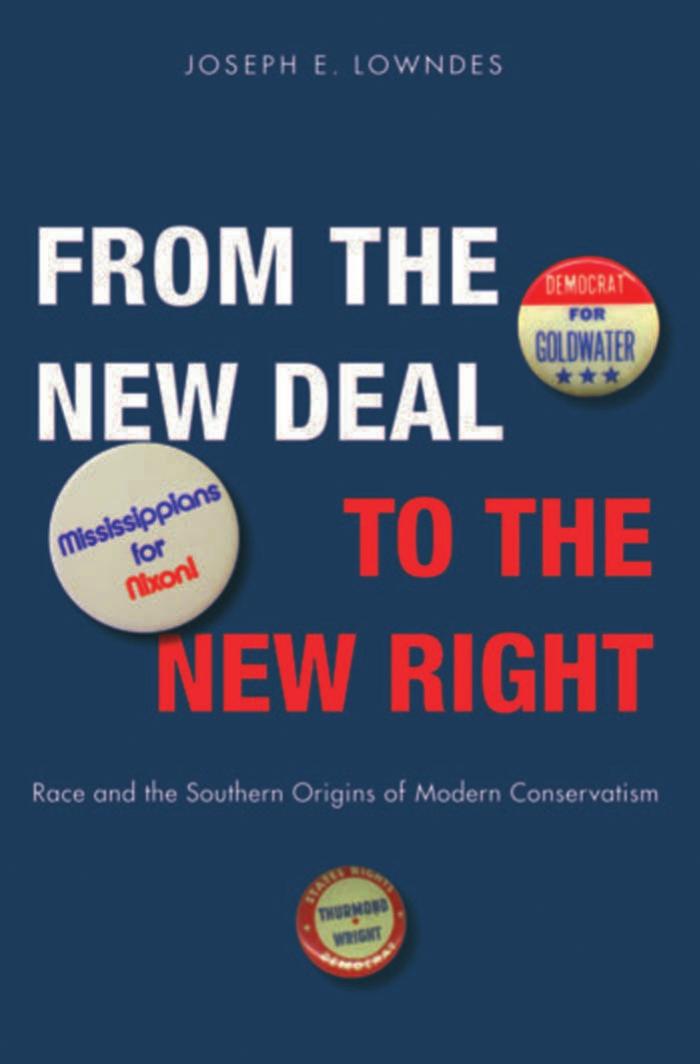From the New Deal to the New Right by Lowndes Joseph E

Author:Lowndes, Joseph E.
Language: eng
Format: epub, pdf
Publisher: Yale University Press
Published: 2008-09-14T16:00:00+00:00
5
âTHE SOUTH, THE WEST, AND SUBURBIAâ: RICHARD NIXONâS NEW MAJORITY
The racial, populist discourse of modern conservatism congealed in the presidential campaigns and administration of Richard Nixon and thus was finally lodged in national governing institutions. Whereas the Dixiecrat Revolt, the Goldwater candidacy, and the Wallace campaigns had all failed in their immediate goals, Nixon succeeded. These other political phenomena prepared the ground for a Nixon victory, as each had contributed something critical to his message. Various political forces that had buoyed modern conservatism were, by the end of the 1960s, willing to dull the edges of their particular demands in order to achieve concrete power at the presidential level. For segregationist leaders such as Strom Thurmond, this meant forgoing opposition to desegregation. For conservative Republicans, it meant turning over the party reins to a comparative moderate after the 1964 electoral debacle. For an increasing number of white, urban, blue-collar Democrats up North it would mean trading some of the social benefits afforded by the New Deal for a check on the black freedom movement. Just as important, however, Nixon himself was initially able to make accommodations to the still-reigning New Deal regime by supporting certain liberal commitments, both to civil rights and to the welfare state.
Through this selective appropriation of both liberal and conservative themes, Nixon succeeded in reshaping the political field by the end of the 1960s, building what he called the âsilent majorityâ or, as he came to prefer, the ânew majority.â In that decade Goldwater had galvanized the passionate dedication of the conservative movement, but in doing so convinced the rest of the nation that he was an extremist out to dismantle the liberal state from which most Americans had greatly benefited. George Wallace had populist appeal, more persuasively as an advocate of the white worker. However, his pugilistic racism and authoritarianism remained beyond the bounds of reasonable politics for the majority of Americans. But these two figures created room for Nixon to emerge as a critic of âbloated bureaucracy,â an advocate of âlaw and order,â and a moderate friend of the white South. He could move the political center in that direction as long as he claimed to stand for civil rights and for federal action to solve social, economic, and environmental problems. The Left hated him, of course, but he enraged conservatives as well, who felt that they had become, in Pat Buchananâs revealing prose, âthe niggers of the Nixon administration.â1
Nixonâs majoritarianism began to shift; however, as he started to actively promote the politics of both conservatism and white racial resentment. His stated wish to âbring us togetherâ in the 1968 campaign turned into a battle between âus and themâ within a few short years. As long as Nixon supported basic elements of the New Deal project, he could both claim majoritarian backing and get cooperation from other branches of government. But as he moved rightward he faced stiffening opposition that eventually led to his demise. Nixon offered a potent challenge to the Democratic regime and drove sharp wedges between significant elements of that coalition.
Download
From the New Deal to the New Right by Lowndes Joseph E.pdf
This site does not store any files on its server. We only index and link to content provided by other sites. Please contact the content providers to delete copyright contents if any and email us, we'll remove relevant links or contents immediately.
The Secret History by Donna Tartt(18857)
The Social Justice Warrior Handbook by Lisa De Pasquale(12143)
Thirteen Reasons Why by Jay Asher(8800)
This Is How You Lose Her by Junot Diaz(6800)
Weapons of Math Destruction by Cathy O'Neil(6149)
Zero to One by Peter Thiel(5691)
Beartown by Fredrik Backman(5603)
The Myth of the Strong Leader by Archie Brown(5429)
The Fire Next Time by James Baldwin(5251)
How Democracies Die by Steven Levitsky & Daniel Ziblatt(5132)
Promise Me, Dad by Joe Biden(5088)
Stone's Rules by Roger Stone(5027)
A Higher Loyalty: Truth, Lies, and Leadership by James Comey(4851)
100 Deadly Skills by Clint Emerson(4845)
Rise and Kill First by Ronen Bergman(4705)
Secrecy World by Jake Bernstein(4652)
The David Icke Guide to the Global Conspiracy (and how to end it) by David Icke(4629)
The Farm by Tom Rob Smith(4442)
The Doomsday Machine by Daniel Ellsberg(4420)
